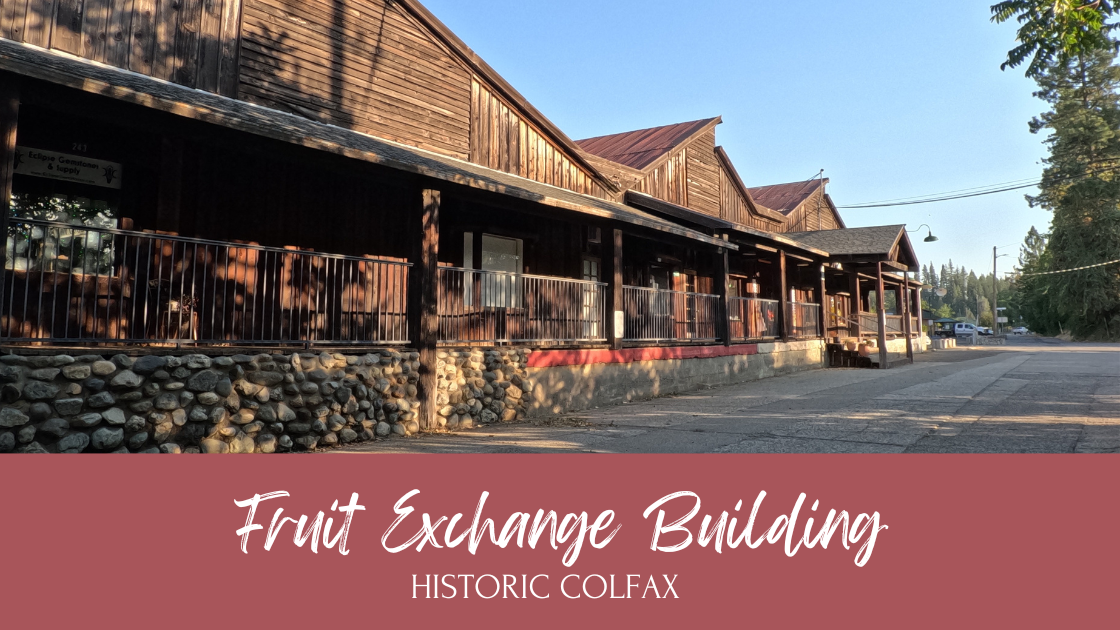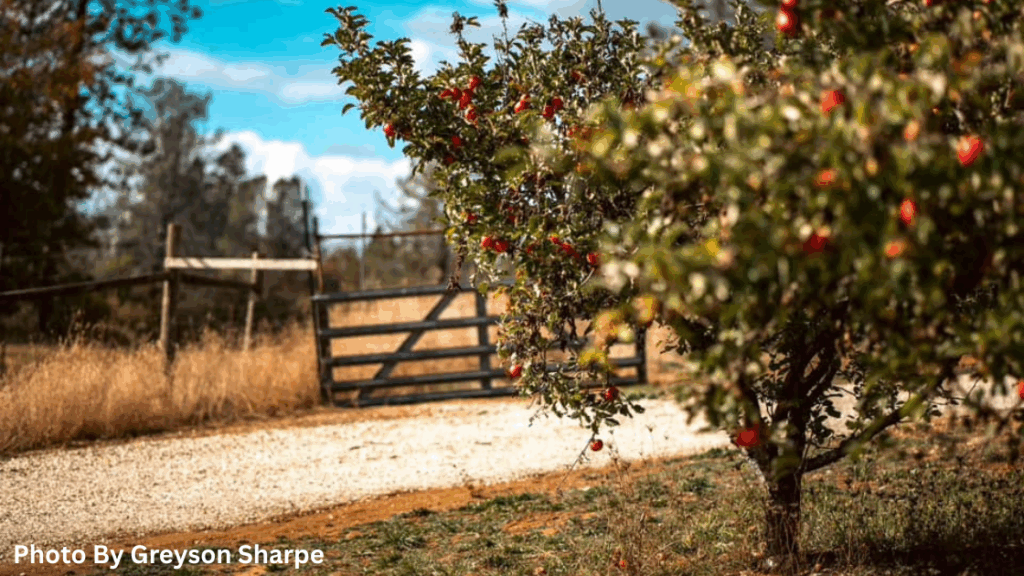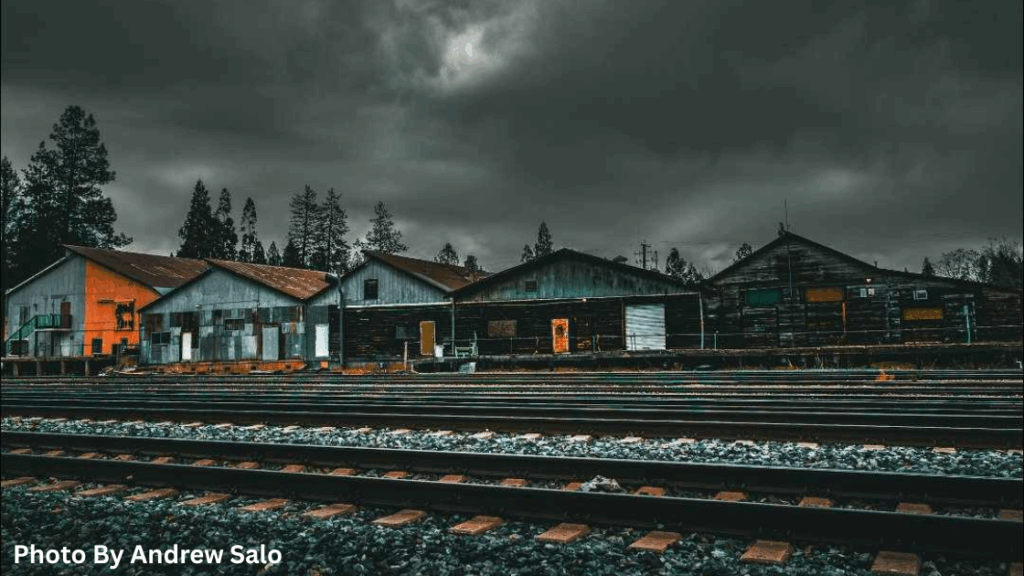The Historic Fruit Exchange Building

In the heart of Colfax, California, just steps from the Southern Pacific Railroad line, stands a quiet but powerful reminder of the town’s lesser-known claim to fame: agriculture. The Fruit Exchange Building, still present in Colfax’s historic district, was once the beating heart of the local fruit shipping industry—an industry shaped by Gold Rush ingenuity, railroad innovation, and community collaboration.
Gold Rush Roots: Before the Fruit Boom
Before Colfax bore its current name, it was known as Illinoistown—a supply post for miners chasing their fortunes in the nearby canyons. But even in the midst of the Gold Rush, visionaries saw another kind of gold: the land. The land set the stage for what would become the Historic Fruit Exchange Building’s significance.
In 1850, local pioneer Enos Mendenhall planted one of the first fruit orchards in the region. The Sierra Foothills’ elevation, mild summers, and rich soil made it ideal for growing apples, pears, peaches, and grapes. While many came seeking metal, some stayed to cultivate the land, laying the groundwork for Colfax’s rise as a fruit-producing powerhouse.

Nature’s Icebox: Snowpack Refrigeration
Long before electric refrigeration, farmers in the Colfax area relied on the surrounding Sierra Nevada snowpack to keep perishables cool. According to oral histories and regional accounts, it wasn’t uncommon for harvested fruit to be stored in naturally cool areas—such as snow-filled canyons or root cellars—until it could be transported. Such storage methods were crucial for the fruitful activities associated with the Historic Fruit Exchange Building.
This use of natural refrigeration is a testament to the innovation of early foothill farmers who found ways to preserve delicate produce in rugged conditions.
The Rise of Agriculture in Colfax
By the late 1800s, fruit orchards—especially apple, pear, and peach groves—were flourishing in the Colfax area. The fertile soil, elevation, and mountain climate made it ideal for growing stone fruit and grapes. Farmers needed a way to efficiently distribute their harvests to major markets in Sacramento and San Francisco, and the rail line through Colfax became the perfect shipping solution.
In 1890, the Sacramento Union reported the completion of a new fruit shipping house in Colfax, marking the town’s growing agricultural presence. This was a precursor to the Historic Fruit Exchange Building’s role in Colfax’s history.
The Colfax Fruit Growers Association helped farmers organize and promote their crops to buyers across the state, strengthening Colfax’s role in the California fruit industry.

Railroad Expansion & the Rise of the Fruit Industry
The completion of the Transcontinental Railroad in the late 1860s transformed Colfax from a stopover town into a strategic shipping center. As orchards multiplied across the foothills, so did the need to get fruit to market—fast and fresh.
To meet this need, the Colfax Fruit Growers Association was formed in the early 1900s, giving rise to the Fruit Exchange Building. This hub allowed growers to inspect, pack, and ship their harvest directly from downtown Colfax via the adjacent Southern Pacific line, turning the nearby Historic Fruit Exchange Building into a bustling hub.
By the 1920s, Colfax was exporting thousands of crates of fruit each year, bound for San Francisco, Sacramento, and beyond.
The Icing Platform and Pacific Fruit Express
In 1926, the Southern Pacific Railroad constructed an icing platform in Colfax as part of the Pacific Fruit Express (PFE) network. Colfax was one of only 23 icing locations in the Central District of PFE operations. These platforms were essential for keeping perishable fruit cold inside refrigerated railcars—known as “reefers”—using massive blocks of ice. Such facilities supported the Historic Fruit Exchange Building until the early 1950s, when mechanical refrigeration became more widespread.
Decline of the Fruit Industry
As agriculture technology, refrigeration, and shipping logistics advanced after World War II, Colfax’s prominence as a fruit-shipping hub began to fade. Larger regional centers in the Central Valley took over much of the distribution. By the mid-20th century, the once-thriving Historic Fruit Exchange Building had become mostly inactive, and many of the once-thriving orchards were sold off, replaced, or left fallow.
The Fruit Exchange Building Today: A Symbol of Heritage
Today, this building remains a significant part of Colfax’s historic downtown. The Historic Fruit Exchange Building, though it no longer functions as a packing shed, stands as a powerful reminder of Colfax’s agricultural roots. With its classic architecture and location just steps from the Colfax Train Depot, the structure draws interest from locals and visitors alike.
Preservation efforts by local organizations—including the Colfax Area Historical Society and the Colfax Heritage Museum—seek to protect this chapter of town history and keep it alive for future generations.
Contact
- 229 Railroad Street, Colfax, CA, United States, California
